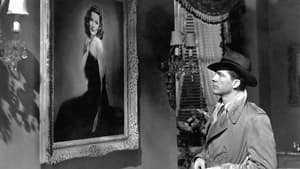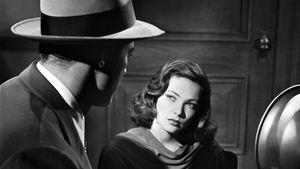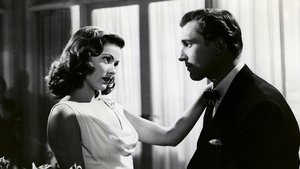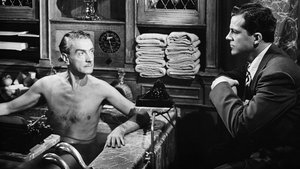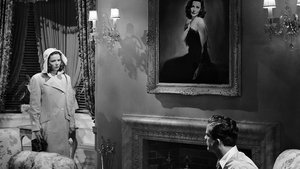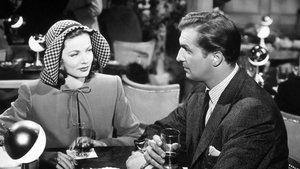Contact: [email protected]
Video Sources 0 Views
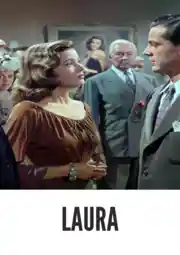
Synopsis
[ez-toc]




Introduction
The cinematic landscape is a treasure trove of timeless classics, and among the gems of yesteryear is “Laura Colorized,” a 1944 film that has captivated audiences for generations. Recently, the film underwent a transformative process, stepping into the modern era through the controversial yet intriguing method of colorization. In this article, we delve into the nuances of “Laura Colorized 1944,” exploring the movie’s history, the controversies surrounding colorization, the meticulous restoration process, and the broader significance of film preservation.
Read Media File Transfer Agreement: Terms and Conditions
Read FAQ
Understanding “Laura Colorized” (1944) and Its Cultural Impact
“Laura Colorized,” directed by Otto Preminger, is a film noir masterpiece that weaves a tale of murder, obsession, and identity. The cast, featuring the likes of Dana Andrews, Gene Tierney, Clifton Webb, Vincent Price, and Judith Anderson, delivers performances that have become iconic in the annals of cinematic history.
Set against a backdrop of mystery and suspense, the narrative unfolds as Detective Mark McPherson (Dana Andrews) investigates the murder of the enigmatic Laura Hunt (Gene Tierney). The film explores the intricate web of relationships surrounding Laura Colorized, revealing layers of deceit and passion.
Preminger’s direction deserves special mention, creating a haunting atmosphere that immerses the audience in the film’s noir aesthetic. The chiaroscuro lighting, shadowy cinematography, and evocative score contribute to the film’s enduring appeal.
The performances of the cast further elevate the movie. Dana Andrews’ portrayal of the stoic detective, Gene Tierney’s ethereal beauty, Clifton Webb’s enigmatic Waldo Lydecker, Vincent Price’s charming Shelby Carpenter, and Judith Anderson’s housekeeper, Mrs. Danvers, collectively bring the characters to life. The chemistry and tension between the characters add depth to the narrative, making “Laura” a gripping cinematic experience.
Decades after its release, “Laura Colorized” stands as a classic example of the film noir genre, leaving an indelible mark on cinema history. The film’s cultural impact extends beyond its initial release, influencing subsequent generations of filmmakers and captivating audiences with its timeless allure.
The Controversy Surrounding Colorization in Film Preservation
The decision to colorize a classic black-and-white film is a divisive one, with proponents arguing for its potential to breathe new life into old movies and opponents decrying it as a sacrilege that compromises the director’s original vision. The controversy surrounding colorization is not unique to “Laura Colorized”; it echoes through the corridors of film history.
Movie colorization gained popularity in the 1980s and 1990s as a way to make old films more appealing to contemporary audiences. However, purists vehemently opposed the practice, arguing that altering the original black-and-white aesthetic distorts the filmmaker’s intent. In the case of “Laura Colorized 1944,” the decision to add color raises questions about artistic integrity and the preservation of cinema heritage.
The Process of Restoring and Colorizing “Laura Colorized” (1944)
Understanding the restoration and colorization process sheds light on the delicate balance between preserving the authenticity of a film and adapting it to modern preferences. The restoration of “Laura Colorized 1944” involves meticulous digital techniques and archival work.
The first step in the restoration process is to source the best available film elements. This may include original negatives, prints, and other archival materials. Once the elements are gathered, a team of experts works to clean and repair any damage, ensuring that the film is in the best possible condition for the subsequent steps.
Colorization, when done with respect for the filmmaker’s intent, can be a transformative art. The goal is not to arbitrarily add color but to enhance the visual experience while staying true to the era’s aesthetic. This involves researching the color palettes of the time, understanding the lighting techniques used during filming, and employing advanced digital technologies to apply color in a nuanced manner.
The process demands a delicate touch, with the colorization team collaborating closely with film historians and experts to ensure authenticity. The result is a rejuvenated version of “Laura” that maintains the essence of the original while offering a fresh perspective to modern audiences.
Preserving the Past: The Importance of Film Restoration
The debate over colorization often underscores a broader conversation about the importance of preserving our cinematic heritage. Film archives and institutions play a crucial role in safeguarding old movies, ensuring that future generations can experience the magic of classic cinema.
The delicate nature of film reels and the inevitable deterioration over time make restoration efforts imperative. The work done by preservationists not only safeguards the physical film but also involves digitizing and cataloging, making these cinematic treasures accessible in the digital age.
The preservation of old films is a labor of love that requires dedication, expertise, and financial resources. It is an investment in our cultural history, allowing us to connect with the past and appreciate the evolution of storytelling through the lens of cinema.
The Debate Over Authenticity: Watching Colorized Films
As audiences grapple with the decision to watch the colorized version of a classic film like “Laura Colorized,” the debate over authenticity comes to the forefront. Is it sacrilegious to tamper with the original black-and-white masterpiece, or does colorization offer a gateway for new audiences to appreciate the brilliance of old films?
Watching a colorized version can provide a different viewing experience, offering a fresh perspective on familiar scenes. It can make the characters more vivid, the settings more immersive, and the emotions more palpable. However, some argue that the absence of color in the original version contributes to its artistic integrity, allowing viewers to appreciate the nuances of light, shadow, and composition.
The decision ultimately rests with the viewer. Some may prefer the unadulterated charm of the original black-and-white version, reveling in the nostalgia it evokes. Others may embrace the colorized iteration, appreciating the effort to bring an old classic into the modern era. The debate over authenticity in film viewing is subjective, highlighting the diverse ways audiences engage with cinematic art.
Where to Experience “Laura” (1944) in Its Full Glory
For those eager to experience “Laura Colorized 1944” in its full glory, several options are available. Online platforms provide convenient access to the film, allowing viewers to stream it from the comfort of their homes. Additionally, DVD rentals offer a tangible and high-quality option for those who appreciate the tactile experience of physical media.
When choosing a platform, it’s essential to prioritize quality to ensure that the colorized version does justice to the original film. Look for reputable streaming services or DVD rental outlets that prioritize the preservation of the filmmaker’s intent and deliver a seamless viewing experience.
Whether through a digital stream or a physical disc, “Laura Colorized 1944” promises to be a cinematic journey that bridges the past and present, offering a unique blend of nostalgia and modernity.
Embracing the Past, Embracing the Future: The Value of Film Restoration and Innovation
In conclusion, projects like the colorized version of “Laura” (1944) contribute to the ongoing dialogue about the value of film restoration and innovation. While purists may resist the idea of altering classic black-and-white films, the process of colorization, when executed with care and respect, can introduce these cinematic treasures to new audiences.
Film restoration is not merely a technical endeavor; it is a cultural responsibility. Preserving the past allows us to appreciate the artistry of bygone eras and understand the evolution of storytelling through cinema. The transformative power of colorization, when harnessed with a deep understanding of the original work, bridges the gap between generations and ensures that classic films remain relevant in the ever-changing landscape of entertainment.
“Laura Colorized 1944” invites viewers to revisit a timeless classic through a new lens, embracing both the past and the future of cinema. As we navigate the complexities of film preservation, it becomes clear that the magic of old movies can endure, transcending time and technology. In the delicate dance between tradition and innovation, “Laura Colorized 1944” stands as a testament to the enduring power of storytelling and the boundless possibilities of film restoration.
